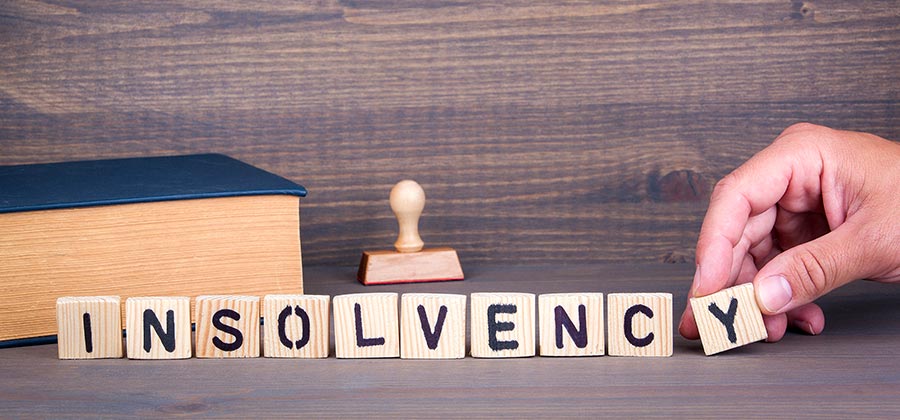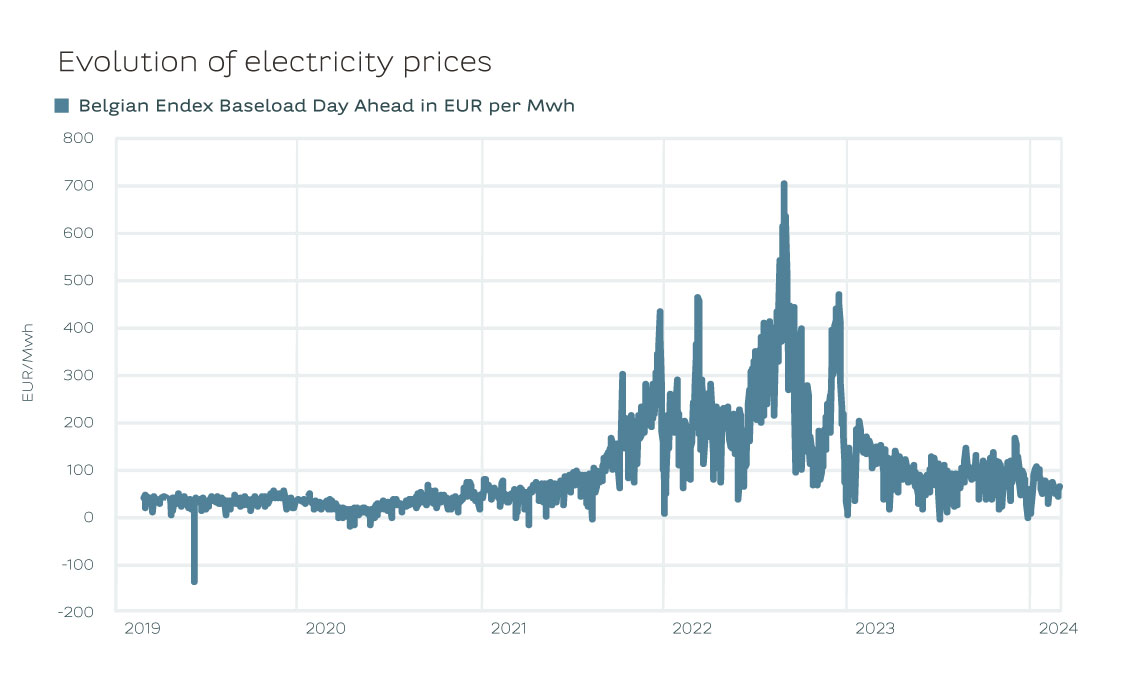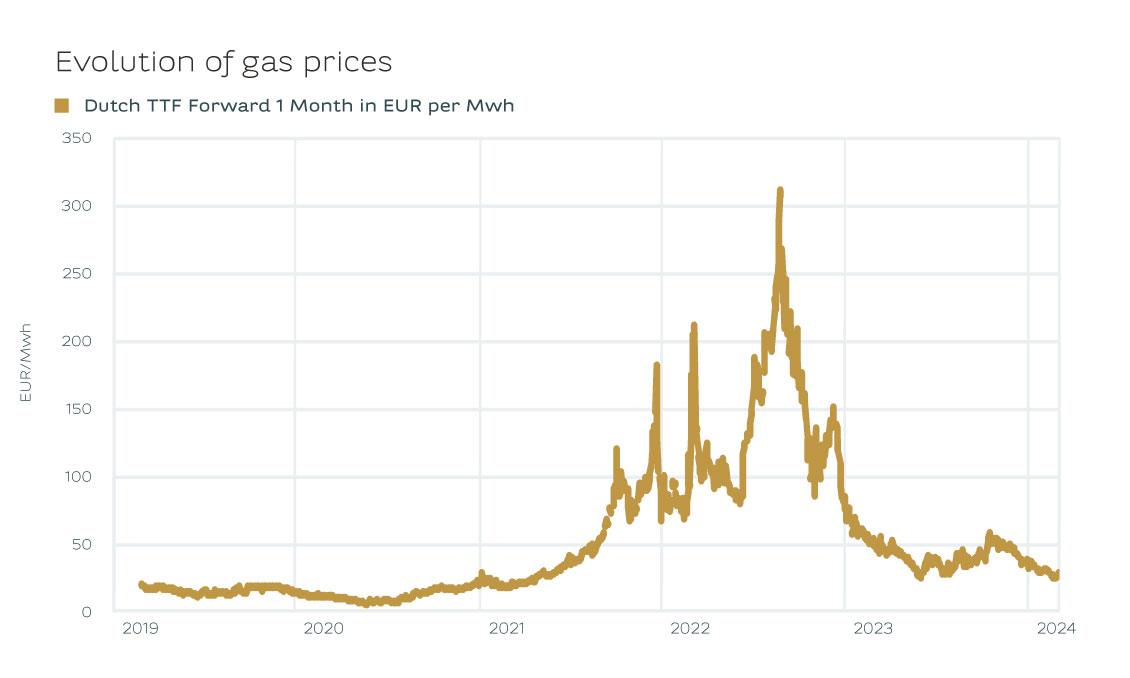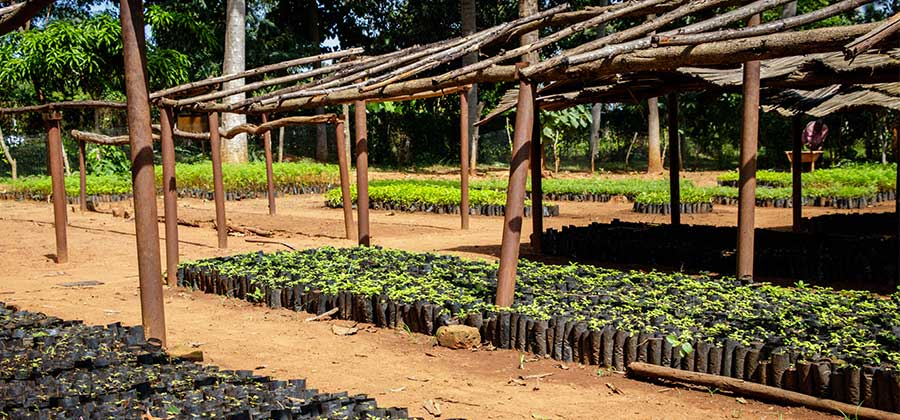The new law on insolvency came into force on 1 May, introducing its share of changes on aspects including court-ordered reorganisation, bankruptcy and the responsibility of directors.

Published in the Belgian Official Gazette last September, the new law of 11 August 2017 applies to all insolvency proceedings begun on or after 1 May 2018. Are changes on the cards? Most certainly. The new insolvency law is more than a simple modification of the existing regulations arising from the law of 31 January 2009 on "company continuation" and that of 8 August 1997 on "bankruptcies": it introduces its own set of new rules. Its stated aim is to create a more consistent framework of laws on the subject and incorporate them into Book XX of the Code of Economic Law. A "big step towards the law of the future" is the description used by the Minister for Justice, and its impetus was derived, among other things, from EU regulations on insolvency and a certain number of Belgian Constitutional Court and Supreme Court rulings. This drive for consistency also aims to strengthen the distinction between "insolvency" and "bankruptcy" in a way that gives weight to the idea of a "second chance".
Insolvency for (almost) everyone
Beyond the desired harmonisation and greater computerisation of processes, the objective was also to considerably enlarge the scope of application of insolvency proceedings. Whereas until now only "traders" could be declared bankrupt, from this point onwards practically all "companies", including liberal professions, will be able to follow procedures to reorganise their business or file for bankruptcy. And they are not the only ones, because agricultural entities (which could already have recourse to the Belgian business act), non-profit organisations, landlords' associations and any individual who is self-employed in their line of work (even company managers or managing directors) are also affected by a broader concept that establishes the idea of the "company" as the basic model.
Priority to the "second chance"
This is one of the most prominent aspects of this law: encouraging businesspeople to start again, either by restructuring their business or by being able to recover more quickly following bankruptcy. This intention can be seen in several new measures:
- The modernisation of the amicable agreement excluding court-ordered reorganisation to make this more attractive and "secure" for the lender. We should also note the appearance of the "company mediator", whose role will be to support businesses in difficulty to prepare this agreement.
- In relation to court-ordered reorganisation there is no real revolution: the three existing forms are retained, but certain rules have been clarified to bring them closer into line with practice.
- Finally, the provisions covering bankruptcy share the same aim: to allow a bona fide victim of bankruptcy to make a fresh start, quickly.
Responsibility of directors
The consistency of rules governing the responsibility of directors of companies in difficulty (except private individuals) has also been reviewed, and the rules have been extended to all "companies" (with a small number of exceptions that include private individuals, SMEs and non-profit organisations). There are three specific cases: the accumulation of liabilities where there is clear and serious misconduct, non-payment of social security contributions, and the unreasonable pursuit of a loss-making business.
10.06.2024
Electronic invoicing between companies to become mandatory
The bill to introduce this obligation in Belgium has been submitted to the Federal Parliament. If the draft bill is approved, B2B e-invoicing will become mandatory from 1 January 2026. Our experts explain why Belgium wants to introduce these new rules, what the implications are for your company and how we can better support you.
“The bill is consistent with international developments and initiatives at the European level,” says Nicolas De Vijlder, Head of Beyond Banking at BNP Paribas Fortis. "Europe's ambition is a harmonised digital standard. Structured e-invoicing between companies will also reduce the administrative burden of invoicing, enabling companies to work more efficiently and increase their competitiveness. The automation of VAT declarations will also help governments prevent tax fraud and adjust economic policies based on more qualitative data.”
Evolution rather than a revolution
“The new legislation is an evolution rather than a revolution,” adds Erik Breugelmans, Deputy Managing Director at BNP Paribas Factoring Northern Europe. "Digitalisation is becoming pervasive at all levels of society, as we have seen with the increase in electronic payments, as well as the additional obligations in recent years regarding electronic invoicing to the government. In this sense, the bill for mandatory electronic invoicing between companies is a logical next step. Our bank is happy to contribute to this process, although we do not intend to offer the same services as accounting software or fintechs. However, we are happy to help our customers with payments and financing."
The impact on businesses
“Customers need to be aware that the new regulations will have an impact on their internal and external processes,” continues Erik Breugelmans. "The majority of Belgian companies mainly serve an international market, which means that the introduction of electronic invoicing will be more complex for them than for companies operating in the domestic market. As the legislation will be introduced in one go, they need to start preparing now."
“The new rules will affect a company’s accounting department as well as its IT department,” emphasises Nicolas De Vijlder. "The procedural requirements are key, otherwise the automated process will not work. However, one of the main benefits of advanced automation is that everything can be done faster and more efficiently. The time between sending an invoice and paying it will be shorter and cash flows more predictable. In addition, it will also reduce the risk of error and fraud, as all transactions will pass through a secure channel."
Ready to offer you even more and better support
“Thanks to the far-reaching digitisation resulting from the new regulations, we will be able to further optimise payments,” concludes Erik Breugelmans. "As a bank, we need to finance our customers’ receivables as quickly and efficiently as possible, so that they have easier access to their working capital. In addition, because we have already gone through an entire process in terms of large-scale automation, we will be able to adapt quickly to the new rules. We can also draw on the expertise of the BNP Paribas Group, which is currently developing an e-invoicing solution for large companies."
Want to know more?
Listen to the episode on B2B e-invoicing :
08.03.2024
Has your company also locked in its energy prices?
The price of energy has experienced both high highs and low lows in recent years. This yo-yo behaviour is a worry to many entrepreneurs. Once again, BNP Paribas Fortis is here to offer you stability.

Controlling the price of energy: it’s an issue that’s almost impossible to avoid, or one that has been a recurring concern in your company over the past few years? We come from a time when energy prices were very volatile, with both high highs and low lows. These fluctuations have worried many entrepreneurs and, in some cases, caused huge additional costs. There is, however, a less well-known way for entrepreneurs to carry out risk management in this area. BNP Paribas Fortis is here to advise you.
Pendulum movement
Energy prices have been on a volatile ride in recent years. After the invasion of Ukraine, they rose to unprecedented levels. Gas prices rose to EUR 300 per MWh, while in previous years they had been around EUR 10-15 per MWh. Electricity prices rose to over EUR 600 per MWh. In previous years, the price was barely EUR 50 per MWh.


Crisis management
"As a result, BNP Paribas Fortis has received an increasing number of enquiries in recent years from companies looking to financially lock in their energy prices. Typically as a company you pay a variable price to the energy supplier. While you fix the price with the bank via a financial swap. Such financial swaps are also used to hedge other commodities (metals, oil products, etc.)."
Mattias Demets, Commodity Derivatives Sales at BNP Paribas Fortis
The energy crisis of 2022 sent shock waves through the economy. Especially in energy-intensive sectors such as metallurgy or chemicals, it became clear how much affordable energy was crucial to the survival of many companies. Those that were self-sufficient in their energy needs weathered the storm better than others. The energy crisis also highlighted the importance of risk management. Companies wanted, as the legislator put it, to act like "prudent and reasonable persons" - the former "good householder principle". They fixed their energy prices and came out of the crisis virtually unscathed. While others could only hope that energy prices would come down again.
'Never waste a good crisis' is a regularly heard truism. For this energy crisis, we can use this expression once again. It’s fascinating to see companies now taking charge of their own energy supply. The rise of PPAs – Power Purchase Agreements – is particularly remarkable. A PPA is an electricity purchase agreement between a power producer and a customer.
Risk management
Companies are also making great strides in risk management. In the past, it was often up to management to lock in energy prices. They saw it as an additional responsibility to negotiate with energy suppliers. But since the energy crisis, we have seen companies become much more professional. Managing energy prices is today a job in itself. Companies are increasingly thinking about the right strategy to manage their energy costs so that their energy prices come down. How and when they lock in energy prices has become more of an informed decision than ever before, allowing them to protect their margins in the event of rising prices.
As a result, BNP Paribas Fortis has received an increasing number of enquiries in recent years from companies looking to financially lock in their energy prices. Typically as a company you pay a variable price to the energy supplier. While you fix the price with the bank via a financial swap. Such financial swaps are also used to hedge other commodities (metals, oil products, etc.). A financial swap may seem a bit complex at first, but it’s actually not such an intricate transaction. Of course, other structures are also available, depending on your needs.
This is where the “prudent and reasonable person” returns to assess what lies ahead. After all, whether you’re looking for smart investment opportunities or advice on ways to control your energy costs, it ultimately boils down to two sides of the same coin. BNP Paribas Fortis not only thinks about investing with you as an entrepreneur, but also about ways to help you smartly and safely manage important expenses such as energy costs.
Permanent drop?
Regardless of how companies choose to fix their energy prices, the current market context is very interesting at the moment. Industry in Europe is going through tough times. Nevertheless, the economy is experiencing a soft landing – a slowdown, without a real recession. This is currently leading to lower gas and electricity prices. We have also had a mild and windy autumn and winter. As a result, energy producers have generated a historically high amount of electricity from renewable sources in recent months.
And there’s nothing to suggest that prices won't continue to fall. Europe is importing more LNG from the United States than ever before. Indeed, both the price of US gas and the cost of transporting it have fallen dramatically in recent months. However, elections are coming up in more than 65% of the developed world, and the geopolitical situation (Ukraine, Israel, Taiwan) could again cause volatility.
Prudence
Gas and electricity prices have not been this low for two years and the market is currently stable. But the 2022 energy crisis has shown that we must always be on our guard. Locking in your energy price is not only the most cost-effective tactic, but it will also protect you, as a business owner in times of increasing volatility.
For more information, please contact your relationship manager.
23.05.2019
Coping as a business with geopolitical risk
William De Vijlder, Group Chief Economist, BNP Paribas zooms in on increasing geopolitical uncertainties.
The slowdown of the global economy which became increasingly visible in the second half of last year has many causes, but there is broad agreement that rising trade tensions, import tariff hikes and concern about the pace of US monetary tightening acted as clear headwinds. In Europe, Brexit-related uncertainty played a role, as well as sector-specific issues, like new emission standards for the automobile sector. Clearly, uncertainty, in various guises, was a big issue: uncertainty about the economy (the international consequences of China’s slowdown), about economic policy (the Federal Reserve’s monetary stance), about political decisions (soft or hard Brexit, Italy’s budget) and about geopolitics (considering that the build-up of commercial tensions between China and the US is about more than the bilateral trade deficit).
Geopolitical uncertainties on the rise
Whereas economic, economic policy and political uncertainty tend to come and go, depending where we are in the economic and political cycle, research based on media coverage of geopolitical tensions shows that geopolitical uncertainty has on average been higher since the turn of the century compared to the 1990s. This higher average is associated with an increased frequency of uncertainty spikes, triggered by events like 9/11, the Iraq war, the Arab spring, the Crimea, Syria, terrorist attacks, etc. These events illustrate that geopolitics now covers a broad range of issues, well beyond the older concept of how nations project their power internationally and react to the behaviour in this respect from other nations.
Empirical research shows that an increase in geopolitical risk weighs on industrial production, employment, international trade, consumer confidence. Moreover, whereas certain events can have a short-lived economic impact, because after a spike, uncertainty drops quite quickly, geopolitical threats (without an event necessarily occurring) can cause a sustained increase in uncertainty and hence have a longer lasting impact. This issue of resolution of uncertainty (“how much longer do we need to wait until we know the outcome?”) has been clearly visible in the reaction to the postponements of Brexit day.
A top priority?
Newspaper articles about geopolitical risks may be numerous but, judging from the mapping in the Global Risks Report 2019 of the World Economic Forum, companies are, in recent years, more concerned about climate change and cyberattacks. In the assessment of their likelihood and impact, they score above average, whereas issues related to geopolitics score around average. This is still sufficient for companies to pay particular attention to it, given the macroeconomic headwind coming from protracted uncertainty or the possible non-linear consequences of risk events. The list of questions to be tackled is long but, as usual when dealing with uncertainty, it is about how can uncertainty be monitored, what is my exposure and how can I manage it. The monitoring is the easier task of the three, considering that there is no lack of research on geopolitical topics. High quality, media-based uncertainty indicators are even available for free on the internet.
“The tensions between the US and Turkey in the summer last year turned out to be short-lived, but they remind us of the necessity to define in advance how to cope with short-lived versus sustained increases in geopolitical risk. “ William De Vijlder, Group Chief Economist, BNP Paribas
Direct and indirect exposure
Assessing the exposure is already more complex, in particular when dealing with indirect exposure. Moreover, one should not only assess where geopolitical threats or events can impact your business, but also, and this is the more difficult question, to which extent.
Direct exposure is about: does geopolitical uncertainty influence how and where I produce (which commodities, which intermediate inputs, how complex a global value chain); does it influence the markets into which I sell; does it influence my financing costs, my access to financing, the use of my cash-flow, the repatriation of foreign profits?
When analysing indirect exposure, the questions ultimately are the same, but the channels are different, more complex and hence challenging to assess. Globalisation has enabled companies to broaden their customer base and lower their cost base, but, with a slight exaggeration, it implies that anything can hit them anywhere. When the US and China are negotiating on trade, it can end up impacting third party countries when it leads to trade diversion (the innocent bystander syndrome). There can be political contagion with unrest in one country spreading to other countries which suffer from similar problems. Financial markets can act as an accelerator or a channel of transmission. The increasingly harsh tone between the US and Turkey in the summer of last year unnerved international investors and contributed to the significant weakening of the Turkish lira. It also raised concerns about financial contagion to other emerging market currencies. Eventually, the tensions turned out to be short-lived, but they remind us of the necessity to define in advance how to cope with short-lived versus sustained increases in geopolitical risk.
Accepting or avoiding the exposure
“Coping with” can mean to just accept it as a fact of life, to build a robust strategy which takes uncertainty explicitly into account or to simply avoid the exposure. Accepting the exposure could make sense if, all in all, the financial impact of risk events would be rather limited. The cost of protracted uncertainty can be taken into account by using a sufficiently high return on investment target before committing money.
Avoiding the exposure could be justified if the trade-off between return and (tail) risk is unattractive, if it would trigger a disproportionate attention by shareholders or creditors, if attractive alternatives to grow the business are available, etc. ‘Avoiding’ could also mean ‘waiting to decide on an investment’ but this raises the question of the opportunity cost of waiting. If a company was contemplating to build a factory in the UK before the Brexit referendum, is there an opportunity cost to waiting for the type of Brexit when alternative locations, outside the UK, are available? When time is money, waiting ends up being expensive.
The question of building a robust strategy is the more interesting and challenging one. It starts from the observation that we are (or need to become) active in a country (e.g. because it is a huge market or because it is key to remain competitive) but that this could increase the exposure to geopolitical risk. In designing a robust strategy, different scenarios are analysed and eventually, the chosen approach should do well under a multitude of environments, without being optimal in any specific one, simply because, in deciding under uncertainty, we are (by construction) not in a position to anticipate which one will materialise. Ongoing geopolitical risk monitoring will allow to plan for corrective action if need be as time goes by.
12.06.2018
Reforestation and biodiversity in practice
Some causes are more important than the pursuit of EBITDA. Without trees there can be no biodiversity, and flora, fauna, soil, water and air are all affected. That is why WeForest is mobilising companies to plant forests.

Reforestation is neither a luxury nor a question for hippies. It is indispensable for the climate and biodiversity, the quality of our soil and water, as well as for food; it is thus vital for the future of all species.
The solutions, which remain under-recognised, are simply waiting to emerge. They are not technical, do not adhere to the logic of extraction and do not call on limited natural resources. They are tremendously effective, draw their inspiration from natural ecosystems and entail integrating trees into fields. See also the article The full potential of reforestation.
We have pinpointed two relevant non-governmental initiatives: Ecosia, a search engine launched by a start-up in Berlin, has attracted 7 billion users and plants one tree for every 45 searches made – the equivalent of some 27 million trees planted to this day; secondly, the non-profit organisation WeForest is utilising its expertise in this area, its basis in science and its business network to engage in sustainable reforestation. We went to meet Marie-Noëlle Keijzer, the founder of WeForest, to hear her story.
From carbon offsetting to corporate 'water footprints'
In the early days, WeForest was not convinced by carbon offsetting, which it regarded as too reductive. Yet it was a means to connect with its target audience: companies anxious to measure, reduce and then offset the carbon emissions that they are not able to avoid. Today, the objective of 'net positive emissions' has been set, which also aims to offset past emissions.
It is obvious that environmental concerns now extend beyond carbon alone. Many are beginning to examine their water footprint. A new vision is taking hold, which entails development aid via the promotion of reforestation. "Moving countries out of poverty and doing more than simply planting trees and leaving: this is how companies now wish to act in a socially responsible way", explains Marie-Noëlle Keijzer, CEO of WeForest.
Intervening on vegetation, carbon, water, air and employment
With the 270 corporate clients that have joined it since 2011, WeForest planted almost 17 million new trees and restored 13,000 hectares of land by the end of 2017, and aims to double these figures by 2020. It offers high-impact marketing materials to customer companies with messages such as 'one sale = one tree planted'.
In 2014, Brabantia decided to 'do something different'. It wanted to sell products, of course, but also give thought to global issues. Working alongside WeForest, the company entered into a joint financing project supporting reforestation. "Since Brabantia began to state on its website, on YouTube and on its packaging that one tree would be planted for every rotary dryer sold, it has seen a 25% increase in sales every year", explains the head of WeForest, citing well-substantiated case studies with certified benchmarks: "We go beyond the theoretical", she continues. "There is total transparency, with every customer receiving a GPS map of the hectares they have funded. We then ensure the forest is protected, approve our customers' projects and help develop the socio-economic activity of the entire region by initiating alternative revenue sources which create employment."
A tree is more valuable in the ground than on it
WeForest is not engaged in helping Zambia in order to maintain its reliance on international aid, but to educate the hundreds of farmers who chopped down all of their trees in order to sell them for firewood. By bringing them together, the association demonstrates that they do not have to clear trees to sell forestry chips, and that by selectively collecting biomass, they can provide heat without cutting a tree down. WeForest trains women to work as nursery growers, giving them a job, an income and an identity. It also supplies beehives to farmers who have begun to produce honey as a new source of income. Bees have other positive effects too, since they pollinate flowers, plants and fruit crops, for example. "It's really simple", affirms Marie-Noëlle Keijzer. "If we kill bees and birds by using pesticides and insecticides, we are preventing nature from doing its work."
Trees provide a habitat for animals and natural fertiliser for plants
In regions of Brazil where tree coverage is 3%, leopards have completely died out. Agriculture has supplanted forests wherever the ground is level. WeForest cannot operate across the entirety of the country, which is much too large. But they have created green corridors, and life has begun again. Trees and plants have been restored, attracting birds and animals that use them to move around, eat and reproduce.
Trees are also a natural source of fertiliser: corn grows more quickly when it is close to trees. They provide shade and retain water in the soil.
There are trees and trees
Not all reforestation projects are equal. Some trees boost the food supply or increase soil nitrogen levels (such as the lucerne), whereas others are detrimental to diversity. For example, no animals will live in palm tree plantations where the soil is also full of chemicals. "We won't solve the problem if we do nothing to change the causes of deforestation: intensive agriculture for the purposes of producing meat, for example", says Marie-Noëlle Keijzer, firmly convinced. Solutions exist, but everyone needs to accept their share of responsibility.
